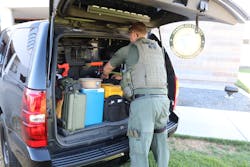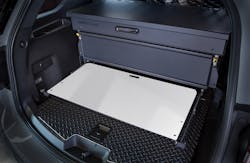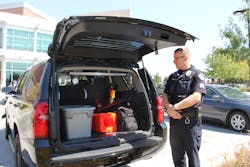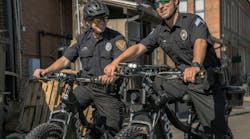In the contemporary world of law enforcement, the sheer amount of equipment that the average officer or deputy has to have available to them can be daunting.
What isn’t actually worn or carried on the person is either kept in the law enforcement patrol vehicle in the passenger compartment or carried in the trunk.
In today’s trunks we have storage systems that help to organize everything, but we also have non-traditional items like computer modules, video system controllers, data connection/modems and more. With some room lost, it becomes all the more important to carefully arrange and organize those items we have to store.
All of what goes in the trunk or rear storage space of a patrol vehicle can be put into one of four categories:
- Emergency incident response
- Emergency care response
- Investigative/reporting duties
- Personal care items
The categories
Emergency Incident Response
As part of our day-to-day reality in law enforcement, we have to respond to incidents where some bad guy is presenting an immediate and often on-going threat to innocents. Depending on the level of that threat, what we typically wear and carry may be enough. That would include our “normal” body armor and everything that’s on our gunbelt or vest. Many agencies are moving to equipment vests to get the weight of the equipment off the hips and onto the shoulders. But for some incidents, that might not be enough.
There are also a variety of accident types that officers respond to that need to be stocked for. In the old days a case of flares would be in the trunk, but these days it’s just as likely to be some type of electrical LED-driven lighting. Barricade tape is mandatory. A burn or pediatric blanket would be a good idea.
Depending on your jurisdiction or circumstances, a couple extra boxes of ammunition would be worthwhile. However, if you’re keeping those boxes of ammo in your trunk, remember they are there—keep them from falling under your spare tire where a lot of the trunk trash eventually ends up.
Emergency Care Response
As first responders, we quite often get to incidents that are of an emergency health nature more than a criminal nature. People experiencing heart attacks, some type of laceration, broken bone injury and other health challenges frequently have us providing emergency health care testing the limits of our training and certifications. For those incidents, we should have an AED and a well-stocked general first aid kit. If the agency won’t provide the “well-stocked” first aid kit, the local firehouse might be generous about providing supplies. In more than one instance, a motivated officer has bought something as simple as a good tackle box and taken it to the local firehouse where it got filled with requisite supplies. This first aid kit should be in addition to the trauma kit every officer should have for self-treatment in the event of a gunshot wound. That kit should always be on the officer’s person and carry at least a tourniquet, a hemostatic agent and a pre-measured nasopharyngeal airway.
Investigative/Reporting Duties
Probably the most tedious part of any law enforcement job is the paperwork. Admittedly, with digital reporting products and laptops taking care of an ever-growing majority of it, there is usually still a need for at least some “paper” paperwork. That paperwork, a camera, recording device, etc. can often be needed at the least expected of times. Isn’t that the nature of police work? We respond to the unexpected and handle it in whatever professional manner is required dependent on circumstance.
Personal Care Items
Another unfortunate reality of law enforcement is that we have to work and perform our duties no matter the conditions. Cold? Raining? Snowing? Icy? Contaminated? It doesn’t matter. We still have to do the job. Since many weather services are simply playing the “best guess” game, it behooves us to be ready for just about every kind of weather. No, you don’t need a lined jacket to keep you warm in the summer, but a rain coat to keep you dry is probably a good idea—this can be crucial in the winter, too. During the winter months we all usually have gloves on or in the passenger compartment with us—have plenty of extra non-latex gloves in the trunk as well. Temperatures permitting, a couple bottles of water are always good to have, too.
There is also an assortment of equipment that each agency requires that is specific to the neighborhood or jurisdiction, e.g. border patrol or park police. Whatever your jurisdiction or specific law enforcement mission, plan and organize your trunk contents. Don’t let it just become a big grab bag of you-don’t-know-what when you need it most.





